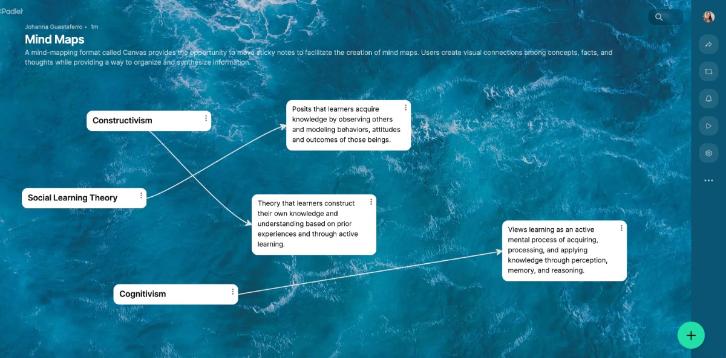Interactive Lesson Ideas using Padlet
Padlet is an online virtual "bulletin board" platform that allows users to create and share digital content. Users can collaborate in real time, adding text, images, videos, links, and more to a customizable digital canvas.
Key Features and Common Uses
| Key Features | Common Uses |
|---|---|
|
|
Utilize these assignment ideas that leverage Padlet's interactive and collaborative features to engage students in meaningful learning activities and promote active participation and peer interaction.
- Collaborative Brainstorming Board: Task students with brainstorming ideas on a specific topic or problem statement collaboratively on a Padlet Board. Each student can contribute their ideas by adding sticky notes, images, or videos. Encourage students to build on each other's ideas and provide feedback.
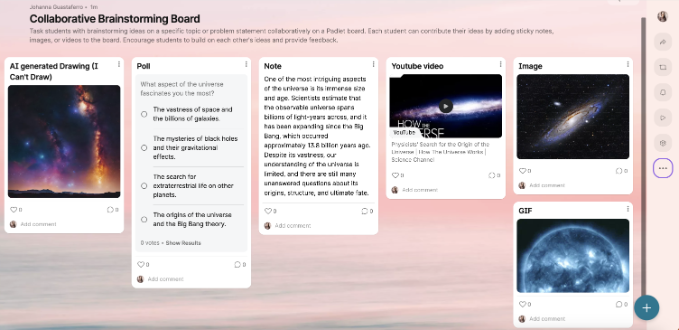
- Virtual Book Club: start a Virtual Book Club assignment where students share their thoughts, summaries, and favorite quotes from assigned readings on a Padlet Board. Students can discuss key themes, characters, and plot developments, and recommend books or articles to their classmates.
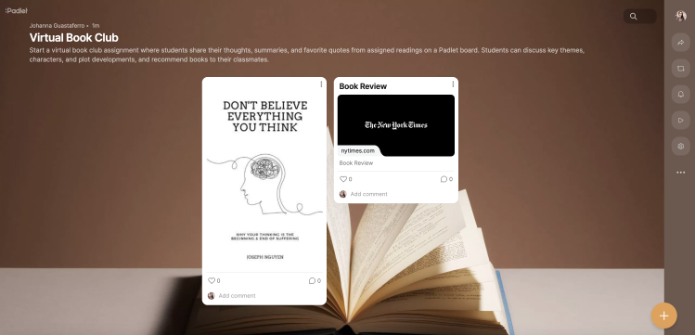
- Peer Feedback Exchange: Organize a peer feedback exchange activity where students share their drafts, essays, and presentations on a Padlet board for peer review. Students can provide constructive feedback, suggestions, and questions to their peers, promoting peer learning and critical thinking skills.
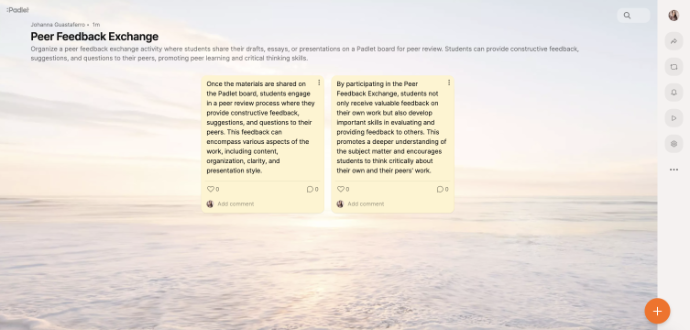
- Exit Tickets: Use Padlet to gauge students' understanding of the material covered, their reflections on the learning process, or their feedback on the lesson itself.
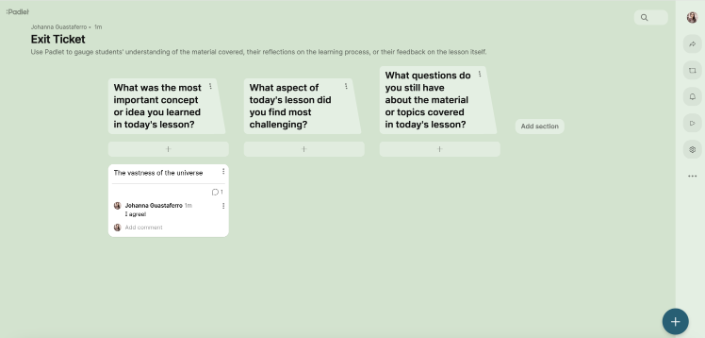
- Introduce Yourself: create an introductory activity in Padlet where students can introduce themselves using different formats. Ask them to create an original image, graphic design, or visual piece that serves as their creative "visual introduction."
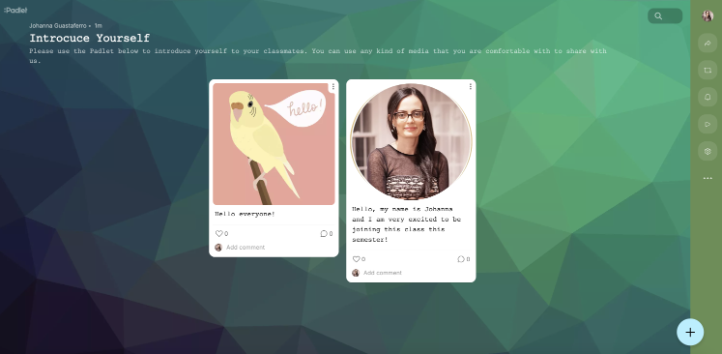
- Formative Assessment: create a visual matching formative assessment Padlet board that allows you to evaluate student comprehension of key concepts and theories interactively. The ability to provide targeted feedback directly to each student's response makes Padlet an effective formative assessment tool.
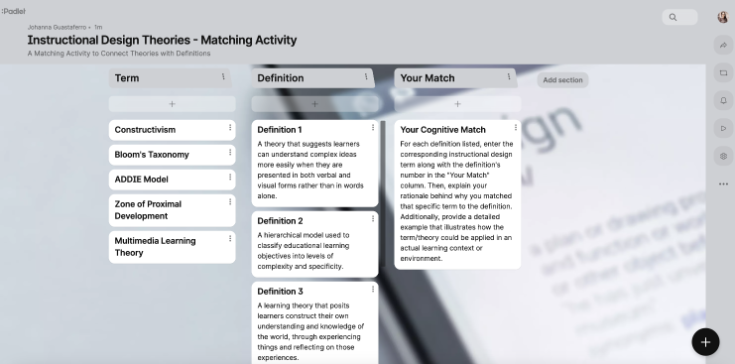
- Mind Maps: A mind-mapping format in Padlet called Canvas provides the opportunity to move sticky notes to facilitate the creation of mind maps. Users create visual connections among concepts, facts, and thoughts while providing a way to organize and synthesize information.
